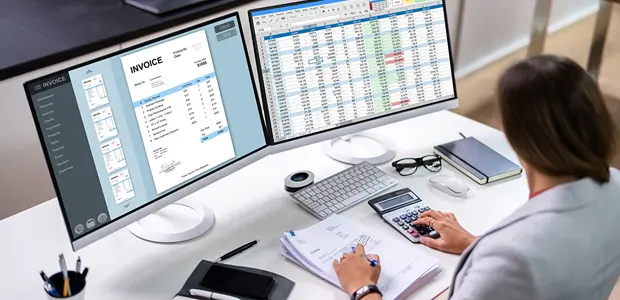Efficient podiatry billing is essential for the financial health and sustainability of any podiatric practice. Proper billing practices ensure that the revenue cycle operates smoothly, allowing practitioners to focus on patient care rather than administrative burdens. This can enhance both patient satisfaction and the operational capabilities of the practice.
The significance of efficient billing extends beyond just processing payments. Often, it reflects a practice’s professionalism and commitment to service excellence. When billing is managed effectively, it helps build trust with patients, promotes prompt payments, and ultimately contributes to a healthier bottom line. Additionally, a well-organized billing system can help practices identify trends in patient visits and treatment types, enabling them to tailor their services to meet the evolving needs of their clientele.
The Role of Podiatry Billing in Your Practice
Podiatry billing involves more than merely submitting claims to insurance companies; it encompasses the entire revenue cycle management process. This includes patient registration, verifying insurance coverage, coding diagnoses and procedures, submitting claims, and managing collections.
A well-structured billing process serves as the backbone of your practice’s financial ecosystem. It ensures that every service rendered is compensated appropriately, thus optimizing cash flow and maintaining operational efficiency. Moreover, effective billing practices can aid in compliance with healthcare regulations, reducing the risk of audits and penalties that could arise from improper coding or billing practices.
Key Benefits of Efficient Billing Services
Investing in efficient billing services can substantially benefit your practice in numerous ways. Firstly, it minimizes the risk of billing errors, which can lead to claim denials and delayed reimbursements.
- Improved Cash Flow: Efficient billing practices help ensure that payments are collected in a timely manner, enhancing the overall cash flow of your practice.
- Time Savings: Automation and streamlined processes allow your staff to focus on patient care rather than administrative tasks.
- Enhanced Patient Relationships: Clear and accurate billing information fosters trust and transparency between you and your patients, leading to better outcomes.
Furthermore, efficient billing services can provide valuable insights through detailed reporting and analytics. By analyzing billing data, practices can identify which services are most profitable, track patient payment patterns, and adjust their marketing strategies accordingly. This data-driven approach not only helps in maximizing revenue but also in making informed decisions about future investments in technology or staff training, ultimately leading to a more robust practice.
Another significant advantage of efficient billing is the ability to adapt to changes in healthcare policies and insurance regulations. The healthcare landscape is continually evolving, and practices that have a flexible and efficient billing system in place are better equipped to handle these changes. This adaptability can safeguard against disruptions in revenue flow and ensure that the practice remains compliant with the latest standards, allowing for a seamless transition during times of regulatory change.
Elements of an Efficient Podiatry Billing Service
To leverage the full potential of your billing services, it is crucial to understand the components that contribute to efficiency. An effective podiatry billing system incorporates various elements that work together seamlessly.
Essential Features to Look For
When evaluating billing services, look for certain key features that signal efficiency and reliability. Effective billing systems should offer:
- Comprehensive Reporting: Robust reporting capabilities give insight into the financial performance of your practice.
- Claims Tracking: Real-time tracking of claims from submission to payment helps identify issues early.
- User-Friendly Interface: An intuitive system reduces the learning curve and increases overall team productivity.
Streamlining Your Billing Process
Streamlining your billing process involves adopting best practices that eliminate redundancies and improve efficiency. Training staff on the latest billing software and coding techniques is fundamental to minimizing errors.
Additionally, implementing electronic health record (EHR) systems to integrate billing and clinical documentation can further enhance efficiency. When clinical and billing data are aligned, it reduces discrepancies and accelerates the claims process.
Moreover, regular audits of your billing practices can uncover hidden inefficiencies and areas for improvement. By reviewing coding accuracy and claim rejection rates, practices can adjust their strategies to enhance revenue cycle management. This proactive approach not only ensures compliance with ever-changing regulations but also fosters a culture of accountability within the billing team.
Another critical aspect is the importance of effective communication with insurance companies. Establishing solid relationships with payers can facilitate smoother claims processing and quicker resolutions to any disputes. Regular follow-ups and clear documentation can significantly reduce the time it takes to receive payments, ensuring that your practice maintains a healthy cash flow.
Overcoming Common Challenges in Podiatry Billing
While efficient billing services offer great advantages, there are common challenges that practices often face. Recognizing these pitfalls can help you proactively address them.
Identifying Potential Pitfalls
Some of the most frequent billing challenges include improper coding, lack of follow-up on claims, and insufficient documentation of patient encounters. These issues can lead to claim denials and delayed payments, impacting your practice’s financial health.
Additionally, the ever-changing landscape of insurance policies requires continual staff education and training, which can be a logistical challenge for practices with limited resources. The complexity of various insurance plans means that even experienced staff can struggle to stay current, leading to errors that could have been avoided with better training and resources.
Solutions for Common Billing Issues
To combat these challenges, implementing a robust training program for your staff is essential. Regular updates on coding changes and insurance requirements help ensure compliance and accuracy. Creating a culture of continuous learning not only empowers your team but also fosters a sense of ownership over the billing process, which can enhance overall morale.
Using technology, such as automated reminders for claims follow-up, can also alleviate collections issues. By keeping abreast of industry trends and best practices, your practice can minimize the impact of these common billing pitfalls. Additionally, investing in specialized billing software tailored for podiatry can streamline operations, improve accuracy, and facilitate better communication with insurance companies, ultimately leading to quicker reimbursements and a healthier cash flow.
Furthermore, establishing a dedicated billing team can significantly improve the efficiency of your practice’s financial operations. This team can focus solely on billing-related tasks, allowing for more specialized attention to detail and a quicker response to any issues that arise. By separating these responsibilities from clinical duties, you can ensure that both patient care and financial health receive the focus they deserve, leading to a more sustainable practice overall.
Transitioning to a More Efficient Billing System
Making the shift to a more efficient billing system is a critical step for any practice aiming to enhance its operational efficiency. However, this process requires careful planning and execution to ensure success.
Steps to Implementing a New Billing Service
Begin by assessing your current billing system and identifying gaps or areas requiring improvement. After this evaluation, outline clear goals for your new system and establish a timeline for implementation.
Engaging with a reliable billing service provider can also ease this transition. They can guide you through the initial setup, training, and optimization processes, ensuring that your practice benefits from their expertise.
Additionally, it’s essential to involve your financial team early in the process. Their insights can be invaluable in pinpointing specific challenges and requirements unique to your practice. By collaborating with them, you can tailor the new billing system to better meet your financial objectives and streamline workflows, ultimately leading to improved cash flow and reduced billing errors.
Ensuring a Smooth Transition for Your Practice
A smooth transition involves more than just technical setups; it requires a commitment from your staff to embrace the changes. Regular communication with your team throughout the process fosters a culture of transparency and helps mitigate resistance to change.
In addition, assigning designated team members as point contacts for training and support can facilitate the exchange of information and ensure everyone is on the same page during the transition. These individuals can serve as champions for the new system, helping to address concerns and share best practices among their peers.
Furthermore, consider scheduling regular feedback sessions post-implementation to gather insights on the new system’s performance and make necessary adjustments. This ongoing dialogue not only enhances user satisfaction but also empowers staff to take ownership of the new processes, leading to a more cohesive and efficient billing operation.
Maintaining and Optimizing Your Podiatry Billing System
Once a new billing system is in place, maintaining and optimizing it is key to achieving ongoing efficiency. This involves regularly reviewing both system performance and staff adherence to billing best practices.
Regular System Checks and Updates
Frequent system checks can help identify potential issues before they escalate. Scheduled reviews of billing cycles and claims metrics can provide valuable insights into process efficiency and areas for improvement.
Updating the system to keep pace with changes in medical billing regulations or coding updates is equally essential. This proactive approach keeps your practice compliant and minimizes disruptions to operations.
Continuous Improvement Strategies for Billing Efficiency
A culture of continuous improvement is vital for sustaining billing efficiency in your podiatry practice. Encourage feedback from staff about the billing process and be open to making
changes based on their insights.
Additionally, investing in ongoing training and technology upgrades can help your team stay competent and confident in their billing roles, leading to both satisfaction and improved outcomes for your practice. Prioritizing a commitment to excellence in billing processes will ultimately elevate the performance of your practice, ensuring it thrives in a competitive healthcare landscape.








